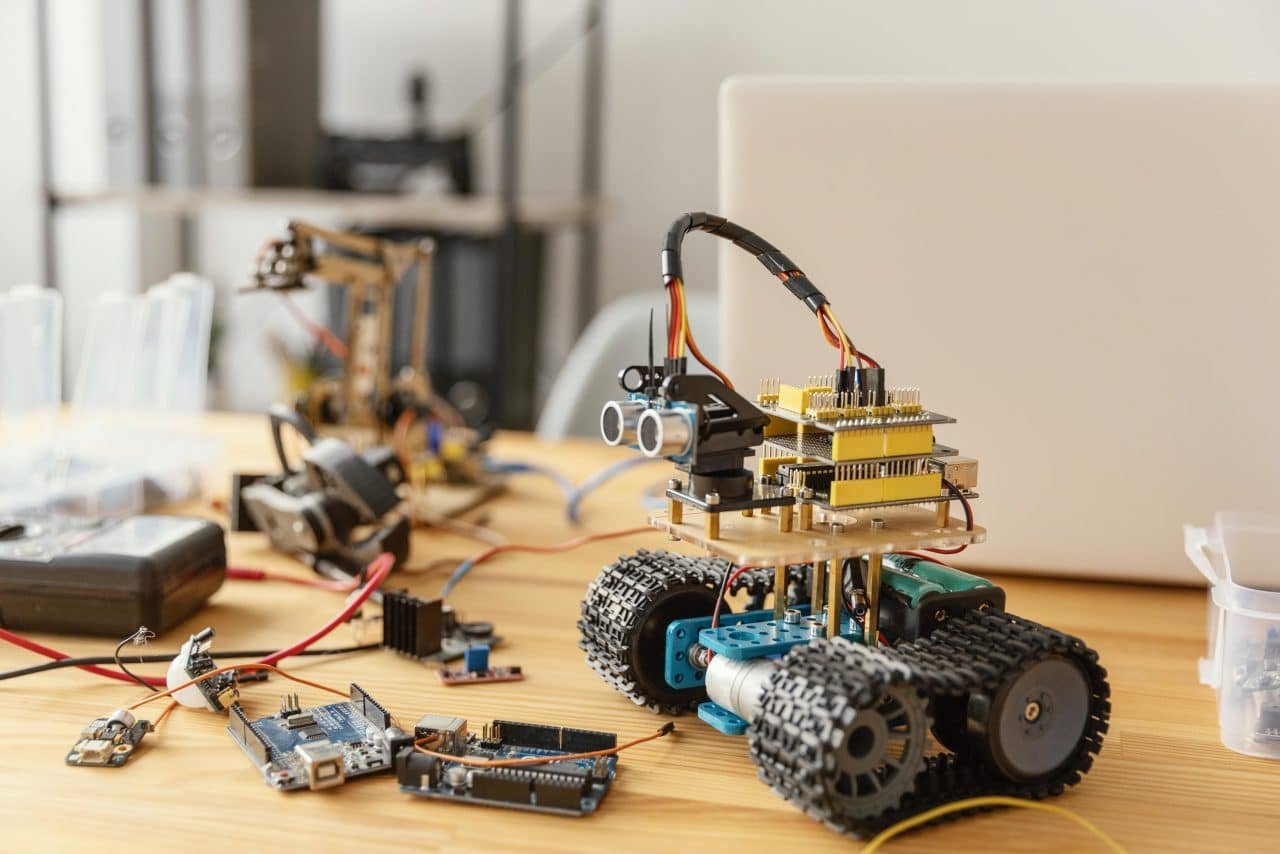Easy-to-use robotics kits for children offer intuitive instructions. Some even integrate with mobile apps or tablets for coding, giving kids an engaging way to build and program robots over time.
This eco-friendly DIY robot project introduces children to solar energy while engaging their coding skills. They’ll learn to program the bot to navigate obstacles and complete challenges using an app on their smartphone or tablet device.
Easy to Use
Kids without the budget for formal STEM instruction or summer robotics camps can still experience hands-on STEM learning thanks to kits. These easy-to-use robots provide an engaging introduction into this fascinating world; great for building interest through hands-on activities at home while teaching 21st century skills such as coding, problem-solving and creative thinking in an engaging way.
Obstacle Avoiding Robot Kit is an inexpensive yet cubically cuddly kit designed to teach kids coding and design as they create a robot that navigates a room without colliding into things. This set includes everything necessary to build the bot quickly in half an hour; bump sensors on either side detect objects which cause it to change direction when encountered, further encouraging kids’ creative play!
More advanced projects offer children an opportunity to learn about motors and joints while creating a robot arm with moving joints, adding sensors so it follows a light source, and program it so it follows it – teaching kids about how coding makes robots do amazing things!
Other DIY Robotics Kits that are simple for children to use include the 4M Tin Can Robot. Kids can build this eco-friendly creation from recycled soda cans using this kit’s motor, hands and googly eyes – perfect for creating adorable bots on wheels that move about. Kids can do it themselves without adult assistance!
Easy to Build
Robotics provides children with valuable problem-solving skills. For example, when their robot fails to perform as expected, kids learn to understand why and come up with solutions. This type of thinking will serve them well as they progress further into STEM disciplines such as biology or physics.
Kids interested in robotics will also find plenty of extracurricular opportunities, including summer robotics and STEM camps. These guided learning experiences can give children an early head start in their future career path while simultaneously building skills they can practice at home with DIY robotics kits.
Kids looking for an advanced robotics experience may benefit from kits like Elenco Mech-5 that combine building and coding. Children snap together pieces to build their robot before using its included coding wheel to manipulate its movements – even programming their bot to draw, lift, kick or throw objects!
Makeblock Ultimate 2.0 is another robotics kit designed to teach children both graphical blocks and text-based programming in Arduino IDE. Featuring over 550 pieces and directions for 10 distinct robots – including a robot tank equipped with gripper arms, catapult, and walking ant. Plus it is compatible with various third-party sensors allowing it to adapt for future projects!
Easy to Learn
DIY robotics kits for kids provide an engaging entryway into STEM learning, featuring simple coding interfaces and plenty of options to keep children interested and engaged.
Coding robots can help kids connect basic science and math concepts with real life situations, like lessons in gravity or echolocation. Furthermore, getting one to kick, draw or lift objects can introduce concepts like acceleration or tension.
Robots can inspire children to experiment with design principles. A robot that illuminates in the dark may prompt children to consider efficient means for lighting an area; while another rescuing stuffed animals from certain doom can spark interest in design while helping children appreciate how form follows function.
Elenco’s Mech-5 Robot Kit provides kids with all they need to begin building and programming their very own robot. With detailed instructions and motors, hands, googly eyes and tin can included, your child will quickly be on his or her way towards creating their very own mobile bot. Click here for current price. The UBTech Jimu Buzzbot also provides an intuitive coding system but does not come equipped with sensors; therefore they must provide them separately.
Easy to Share
Robotics kits make STEM education engaging and enjoyable, sparking kids’ curiosity and creativity. Additionally, these kits allow people to connect through online communities as they experiment with robotics at home; students, hobbyists, and others can experiment with it at any level at any age. Furthermore, anyone can use these kits to learn how to design robotic systems that mimic real-world machines.
Beginners should look for a robot kit with preassembled components and straightforward instructions, featuring drag-and-drop coding interfaces to introduce fundamental programming concepts engagingly and building challenges to cultivate problem-solving abilities and inspire creative design.
More advanced DIY robotics kits for kids offer children the chance to experiment with advanced sensors and motors, enabling them to build complex robots with increased functionality. Furthermore, such kits should facilitate customization; encouraging children to experiment with various solutions before creating their own unique designs.
Many robot kits are tailored towards older children, but some offer an ideal gateway into STEM learning for preschoolers and early elementary school students. One such example is the 4M Tin Can Robot that combines basic mechanical and electrical lessons with eco-friendly creative exploration; solar-powered bug bots introduce energy, sensor and energy technologies while encouraging STEM education; DIY kits inspired by fairy tales or fantasy such as Mihir Keskar’s “Goldilocks and Three Bears” treasure hunt robot or Liam Raissian’s game designed by Liam Raissian that uses an app to get Rapunzel to let down her locks! These examples all make good starting points.

